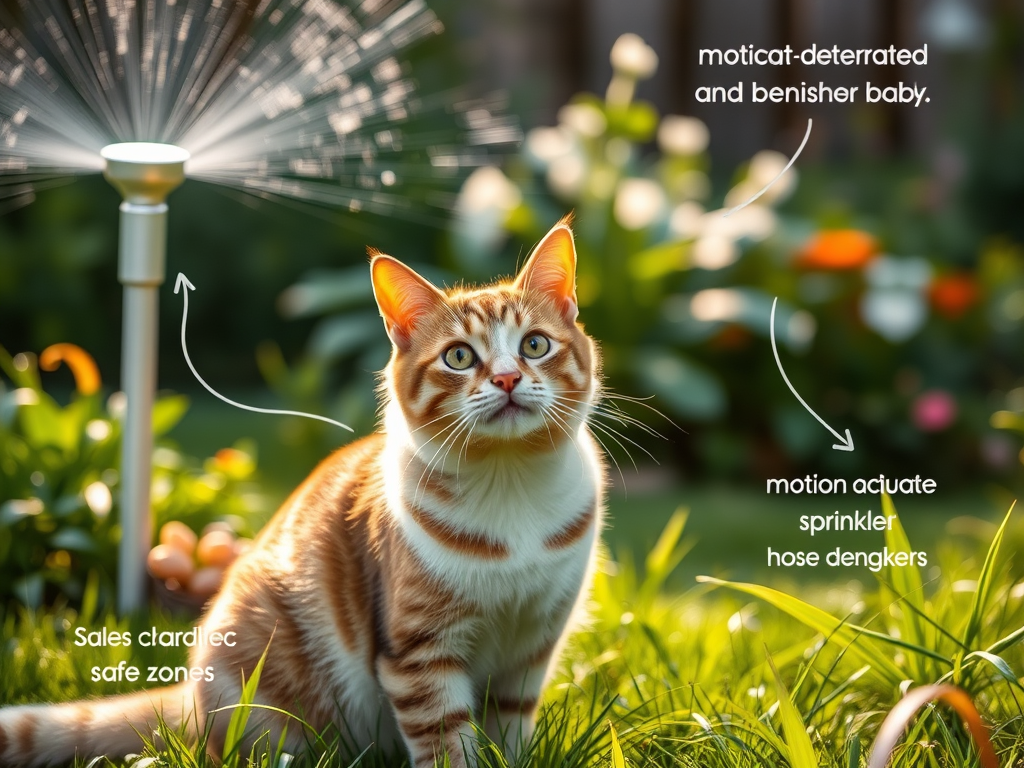Engaging Approaches to Mitigate Your Cat’s Innate Hunting Instincts
Minimizing Your Cat’s Hunting Impact: The instinctual urge to hunt is a fundamental characteristic of cats, rooted in their evolutionary past. Although this behavior is instinctive and natural, it is essential to cultivate a safe indoor environment that accommodates their hunting impulses while protecting local wildlife. By creating stimulating spaces and activities that engage their senses, you can keep your cat both mentally and physically active. This engagement is vital for their happiness and fulfillment, ensuring they remain content without posing a threat to outdoor animals.
Incorporating interactive toys into your cat’s playtime can significantly enrich their indoor experience. Options such as feather wands, laser pointers, and battery-operated mice are excellent choices that can hold your pet’s attention for extended periods. These toys effectively simulate natural hunting scenarios, allowing your cat to engage in stalking, chasing, and pouncing behaviors. Not only do these activities provide necessary mental stimulation and physical exercise, but they also promote overall health by enabling your cat to expend their energy in a constructive manner.
Transform your home into an exciting feline playground by designing obstacle courses that include a variety of structures such as boxes, tunnels, and shelves. This dynamic mini-jungle gym encourages exploration and physical activity, prompting your cat to climb, jump, and investigate new environments. Cats are naturally curious creatures, and by providing diverse play areas, you can create an exhilarating experience that mimics a thrilling safari, allowing them to feel as if they are adventuring in the wild right from the comfort of home.
Never overlook the benefits of puzzle feeders. These innovative feeding solutions challenge your cat mentally while mimicking the effort they would normally expend during hunting. By incorporating treat-dispensing puzzles into your cat’s daily routine, you not only keep their minds actively engaged but also offer a fun and rewarding experience. This approach not only entertains your feline friend but also promotes healthier eating habits, as they learn to ‘work’ for their treats, making mealtimes more stimulating and enjoyable.
Making playtime a priority in your household is crucial for your cat’s wellbeing. Engaging in social interaction through play is essential for strengthening the bond between you and your feline companion. Schedule regular play sessions using the same toys your cat enjoys during solo playtime. This shared experience alleviates any built-up frustration your pet may experience while also deepening your emotional connection, transforming playtime into a mutually rewarding experience.
With a bit of creativity and commitment, you can cultivate a stimulating indoor environment that caters to your cat’s instincts. Your home can become more than just a shelter; it can evolve into a captivating landscape that satisfies their innate hunting drives while ensuring their safety from external dangers. By thoughtfully planning and considering your cat’s needs, you can nurture a happy, fulfilled indoor feline.

Mastering Leash Training: Unlocking Safe Outdoor Adventures for Your Cat
Implementing leash training can open the door to safe outdoor explorations for your cat. While walking is typically associated with dogs, cats can also enjoy the wonders of the outdoors with appropriate training and a patient approach. By introducing your feline friend to a harness and leash, you offer them the opportunity to experience nature while remaining secure and supervised, providing a fulfilling outdoor experience without the risks of unsupervised roaming.
Begin your leash training journey with a well-fitting harness designed for comfort. Allow your cat to familiarize itself with the harness before attempting to put it on. Let them explore, sniff, and inspect the harness, as this will help reduce any anxiety they may have. Gradually introducing the harness at their own pace fosters a positive association, ensuring that the overall process is smoother and more enjoyable for both you and your cat.
Once your cat is comfortable with the harness, attach a lightweight leash and start practicing in the safety of your home. This familiar environment will help your feline adjust to the sensation of wearing a leash, building their confidence as they become accustomed to this new experience. Be prepared for some initial resistance; patience is essential in helping your cat adjust to the leash and harness setup.
When venturing outside for the first time, choose a calm and secure area such as your backyard or a quiet park. Ensure that the location has minimal traffic and distractions, allowing your cat to feel secure and relaxed. Begin with short outdoor sessions to avoid overwhelming your pet, gradually increasing the duration as they become more comfortable exploring their new surroundings.
Supervised outdoor time greatly enriches your cat’s life, enabling them to enjoy the sights, sounds, and scents of nature while protecting local wildlife. Picture the joy on your cat’s face as they discover new experiences in a safe environment. This time spent outdoors not only enhances their quality of life but also strengthens the emotional bond between you and your feline companion.
Real-life stories from fellow cat owners can serve as inspiration. Many have shared their initial uncertainties regarding their cats adapting to leash training, yet they found that consistency and positive reinforcement made a significant difference. Celebrate each small success as a step toward broadening your cat’s horizons while ensuring their safety.
By integrating leash training into your cat’s routine, you foster a blend of outdoor enjoyment and wildlife protection. This balanced approach allows your cat to explore their environment safely while instilling confidence in their surroundings.
Creating Safe Outdoor Environments: The Benefits of Catios
Outdoor cat enclosures, commonly referred to as catios, present an ideal solution for adventurous felines desiring outdoor experiences without the associated risks. These secure spaces enable your cat to enjoy the outdoors while ensuring their safety and that of local wildlife, providing peace of mind for pet owners who wish to balance their cat’s natural instincts with environmental protection.
When constructing or purchasing a catio, customization to fit your available space and budget is crucial. Options can range from simple balcony enclosures to elaborate backyard constructions. The primary focus should be on creating an escape-proof environment, as safety is paramount in providing a secure experience for your cat.
In designing your catio, consider incorporating multiple levels and cozy hiding spots. Cats thrive in environments that offer vertical spaces and areas for retreat. By adding platforms, ramps, and hammocks, you can transform a basic enclosure into an exhilarating paradise that mimics their natural habitat, allowing your cat to indulge in instinctual behaviors.
Enhancing the sensory experience within the catio is equally important. Introduce elements such as cat grass, scratching posts, and logs to create a stimulating environment filled with diverse textures and scents. This sensory enrichment keeps your cat engaged and content while allowing them to enjoy the outdoors in a controlled and safe setting.
Regular maintenance is essential for ensuring the safety of your catio. Routinely inspect for wear and tear, including the integrity of the mesh, the structure, and the locks. Cats are naturally curious and may test the limits of their enclosure, so keeping it in good condition is vital for their wellbeing and security.
With a catio, your feline companion can bask in the sun, engage in climbing, and observe wildlife without posing a threat to local ecosystems. They can relish the joys of outdoor exploration while remaining secure, enjoying the thrill of watching birds and other small creatures from their protected haven.

Effective Training Methods to Diminish Hunting Behaviors in Cats
Teaching your cat to reduce their hunting behaviors may seem challenging, but with the right techniques, it can become a manageable task. The first step is to understand the natural instincts and behaviors that drive your cat to hunt, which is crucial for implementing effective training strategies tailored to their needs.
Utilizing modern technology can significantly enhance your training efforts. Consider employing motion-activated deterrents, such as sprinklers or noise-makers, to establish boundaries that discourage hunting without disrupting other activities. Strategically zoning your yard into safe areas can help redirect your cat’s attention away from potential prey, promoting safer interactions with their environment.
Positive reinforcement is a foundational element in modifying your cat’s behavior. Reward them for exhibiting non-hunting actions with treats or affection. For instance, if your cat responds when called or refrains from chasing a potential target, reward them with a tasty treat or extra affection. This approach encourages them to repeat desirable behaviors while diminishing their instinctive urge to hunt.
Incorporating clicker training can also prove to be an effective method. This technique involves associating a distinct sound with positive actions, enabling your cat to connect their behavior with rewards. By clicking when they demonstrate desired behaviors, you reinforce good habits and clarify your expectations, enhancing their learning process.
For more personalized guidance, consider consulting with feline behavior specialists. They can provide tailored advice and insights that address specific challenges, helping you and your cat coexist harmoniously while respecting the needs of local wildlife.
The goal of using deterrents and training is not to punish but to guide your cat toward behaviors that prioritize their safety and the environment. With consistency and patience, you can effectively redirect their instincts, leading to safer outdoor experiences for both your cat and local wildlife.
Nutritional Approaches to Mitigate Hunting Drives in Cats
The type of food you provide and the feeding methods you adopt can have a significant impact on your cat’s hunting instincts. Interestingly, even a well-fed cat may still exhibit hunting behaviors; however, the way you feed them can help mitigate this drive. Understanding their dietary needs is essential in reducing the inclination to hunt.
Free feeding, where food is available continuously throughout the day, may not be the most effective approach for every cat. Instead, consider implementing a structured feeding schedule. By establishing predictable mealtimes, your cat may be less likely to hunt, as they learn to associate food with specific times of day, thus reducing the need to seek out prey.
Interactive feeding strategies can be transformative for your cat’s behavior. Utilizing food puzzles or dispensers mimics the act of hunting, requiring your cat to ‘work’ for their meals. This not only keeps them mentally stimulated but also channels their energy positively, allowing their natural instincts to be expressed safely while avoiding unwanted hunting behaviors.
Moreover, pay attention to the nutritional content of their diet. A high-protein, low-carbohydrate diet aligns better with a cat’s natural dietary needs, which may lead to a decrease in hunting behaviors. Collaborating with a veterinarian to customize the diet can ensure your cat’s nutritional needs are effectively met while supporting their overall health.
Lastly, offering a variety of food types can satisfy their inherent curiosity and appetite for novelty. Alternating between dry kibble, wet food, and raw diets can keep mealtime interesting, reducing the urge to seek excitement outside their food dish. A diverse diet promotes not only satisfaction but also a healthy lifestyle.
Feeding strategies extend beyond simple sustenance; they serve as a powerful tool for managing your cat’s behavior. By adjusting how and what you feed them, you can effectively reduce their inclination to hunt while ensuring they remain satisfied and healthy.

Cultivating Community Responsibility for Cat Conservation Efforts
Cats are cherished companions, and as their caretakers, we bear the responsibility of ensuring they coexist peacefully with local wildlife. By embracing community involvement and personal accountability, we can significantly reduce the ecological impact of free-roaming cats on the environment and wildlife.
Engaging with local conservation groups is an excellent way to stay informed about wildlife-friendly practices. Many communities offer educational workshops for cat owners, discussing the ecological consequences of allowing cats to roam freely while providing viable solutions to mitigate these negative effects.
Consider initiating or participating in neighborhood discussions or social media groups focused on responsible pet ownership. Sharing resources, tips, and personal experiences can foster a more wildlife-conscious community, creating a supportive environment for all pet owners that prioritizes the wellbeing of both pets and the local ecosystem.
A proactive approach includes establishing cat-friendly zones within communal gardens or parks. These designated areas can feature enclosures or supervised play spaces, ensuring a safe and nurturing environment for both cats and wildlife. This collaborative effort enhances awareness and promotes positive interactions between pets and nature, fostering a sense of community stewardship.
Incorporating family-friendly initiatives, such as sticker campaigns or educational contests for children and teens, can help raise awareness about responsible pet ownership and the importance of coexisting with nature. Educating the younger generation instills values of compassion and ecological awareness that can last a lifetime.
Lead by example at home by applying the strategies you’ve learned. Whether it’s leash training, building catios, or modifying feeding practices, demonstrating a commitment to a harmonious relationship between your cat and the environment can inspire others to follow suit.
By combining individual actions with community initiatives, we can establish a supportive network that balances our cats’ needs with ecological stewardship. Together, we can cherish our pets while respecting and protecting the wild spaces that enrich our lives.
The Article: Minimize Your Cat’s Hunting Impact Appeared First On Unity Pets.
The Article Minimize Hunting Impact of Your Cat Effectively Was Found On https://limitsofstrategy.com
The Article Effectively Minimise Your Cat’s Hunting Impact First Appeared ON
: https://ad4sc.com

I really love this perspective on managing our cats’ natural instincts! It makes me think a lot about how we can balance their needs with a responsibility to protect wildlife. I’ve noticed that my own cat, Luna, is super engaged when I rotate her toys regularly—like, one day she’ll be obsessed with her feather wand, and the next, she’ll be all about the laser pointer.